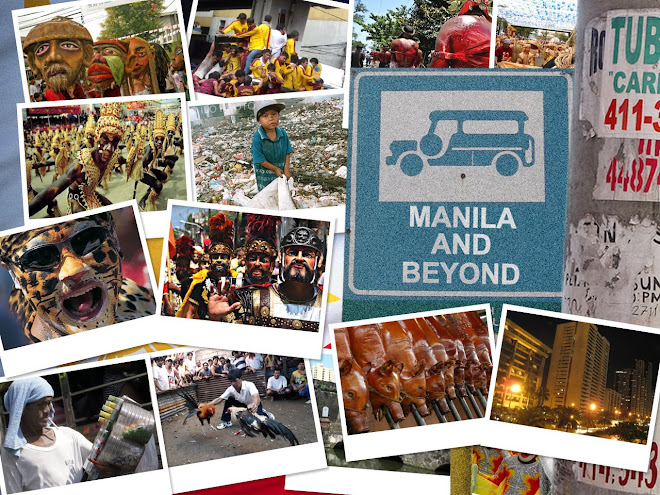If you have been reading my posts and are quite familiar with Manila, you may have probably deduced this by now. I live in Makati City, one of the cities in the Metro Manila area (also called the National Capital Region) and known as the financial capital of the Philippines. To many, Makati City conjures images of high-rise buildings, swanky restaurants, traffic, posh shops. The truth is, Makati City has many surprising faces.
The area where I live is part of the original Makati, the so-called "Old Makati". It is a very congenial, relatively quiet residential area nestled in an elevated portion of Barangay Poblacion, and yet the mall, market, bakery, eateries, church, school, and the main streets are just within walking distance. Very convenient.

Yesterday, Saturday night, I went out of the house to buy some bread from the nearby bakery. I deferred going out for the weekend, so it was rather unusual for me to be walking around the Makati Avenue, P. Burgos Street, and Polaris Street at 8 o'clock in the evening.
The night was young, very young. How many times have I heard this observation? Many major Asian cities sleep very late, if at all. Makati City, probably one of the cities in Metro Manila with the most dynamic nightlife, is definitely no exception. Eight o'clock in the evening is too early for the night creatures.
Anyway, let me show you around the area.

For purposes of simplicity, I start my stroll here. Senator Gil Puyat Avenue, better known as Buendia Avenue, is one of the major roads of Makati City. This is the intersection of Buendia and Makati Avenue.

McDonald's, Makati Avenue, corner Jupiter Street. Hamburger culture is alive and well this part of Asia. This particular branch is open 24 hours.

Jollibee, Makati Avenue. The biggest selling hamburger fastfood chain in the Philippines. The biggest-selling fastfood chain in the Philippines, for that matter. McDonald's biggest headache. Where there is Jollibee, expect a McDonald's a few steps away. And vice versa.

Mang Inasal, Makati Avenue corner Jupiter Street, across McDonald's. A relatively young but fast-growing fastfood chain. Mang Inasal serves chicken
inasal (a highly debatable term, some quarters define " chicken
inasal" as chicken that is cooked over direct fire) and this is one place that I always see to be full, any time of the day.

Green mango pushcart vendor, Makati Avenue. One of the many streetfood-vending carts that can be found in Manila. While they may be bought unpeeled, the green, or unripe, mangoes are sold peeled and sliced, and are usually eated with salt or shrimp paste.

Matrix Bar, P. Burgos Street. For some folks, nightlife starts early. I have never seen the front of this bar empty. Most of the patrons are expatriates enjoying their beer or coffee.

There is a part of P. Burgos Street that has earned a rather notorious reputation of being the new red-light district area. Are they or are they not? For purposes of protection, the faces of the ladies have been digitized.

Another food-vending pushcart along P. Burgos Street. This one sells rice porridge, or "
lugaw".

Wang Market, Polaris Street. A Korean grocery. This area of Makati has seen the rapid proliferation of Koreans these past few years.

Heckle and Jeckle Bar, Polaris Street. This is a rather popular joint among the expats. It is one of the bars in the area that show rugby matches, football games, and other sports events. This place actually overflows during a football match, and with the World Cup just around the corner, Heckle and Jeckle will be really really lively soon. Goooooaaaaalllll! Yeeeeeessss!
I end our little stroll here, hopefully this gave you some idea on how it is like in my area on an early weekend evening. More road trips in the posts to come.























































